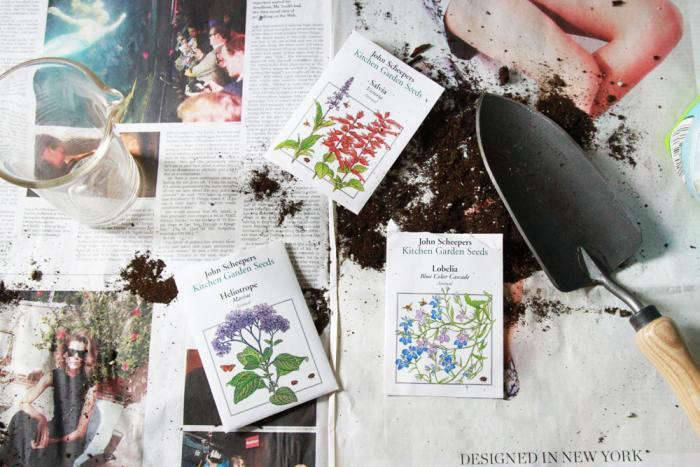Landscaping ideas for sustainable gardens are in the forefront of designers’ minds—and concern about climate change has us all looking for ways we can help. Here is our guide to 16 eco-friendly ways to make a difference.
Permeable Surfaces

One of the most eco-friendly things a garden can do is decrease rainwater runoff. Consider a permeable surface if you’re doing a hardscape project, and use captured rainwater or gray water in the garden.

Landscaping ideas for surfaces that allow water to seep into the ground to aid filtration and slow the flow into drains and waterways are gaining momentum. From a design perspective, permeable surfaces introduce the satisfying crunch of gravel underfoot and add a softer element to hard surfaces.
Decomposed Granite

Our correspondent Ellen Jenkins thinks decomposed granite (aka DG) may be the ideal hardscape material: “After I started looking into DG, I began to notice it everywhere: The pretty little path through the local recreation field that never gets muddy? Decomposed gravel. The soft, natural-looking gravel driveway, where the gravel stays put? Also decomposed granite. The mulch at the base of trees that keeps the ground weed-free? DG again.”
For everything you need to know before deciding if decomposed granite is the right material for your hardscaping project, see Hardscaping 101: Decomposed Granite.
Pea Gravel

Pea gravel–a small, fluid stone found near bodies of water–has an appealingly smooth texture, the result of natural weathering. Pea gravel comes in sizes from 1/8 inch to 3/8 inch, about the size of a pea, and in a range of natural colors such as buff, rust brown, gray, white, and translucent. If you’re trying to decide between decomposed granite and pea gravel, see Hardscaping 101: Pea Gravel.
Ribbon Driveways

Our East Coast correspondent Jeanne Rostaing grew up with a ribbon driveway—two strips of concrete with grass in between—in Memphis: “Ribbon driveways were a natural progression from the ruts carved in the ground by the wheels of wagons and, later, automobiles,” she writes. “It makes sense that if you’re driving your vehicle from the street to the garage every day, you’d want to avoid wearing deep, muddy grooves into your lawn. The simplest and most economical way to do that: paving the areas where the wheels go and leaving the grass in the middle.”
Nowadays ribbon driveways are back in fashion not only because of their eco-friendly permeability but also because they’re visually pleasing. For more about designing and installing a ribbon driveway, see Hardscaping 101: Ribbon Driveways.
Rainwater Capture

Rainwater Hog

For more, see Ask the Expert: 7 Ways to Save Water in the Garden, from a Graywater Crusader.
Irrigation Systems

Artificial Grass
Traditional turf is lovely to look at, but it’s a water hog. We’ve rounded up some of our favorite alternatives, from green ground covers to wildflower meadows to sow in the front yard.

Wildflower Meadow

For tips on sowing wildflowers in the garden, see our growing guides for Queen Anne’s Lace, Cosmos, Foxglove, and Nasturtiums. Browse our Field Guide archives for growing tips for flowers, vegetables, and herbs,
Ground Cover Lawn Substitute

Birds and Bees
Create a garden where pollinators are welcome to help combat the rapid depletion of habitats. You can sow wildflowers, plant a pollinator garden, add a native plant, or put a green roof on your house to give nature more of a chance.

Native Plants

Wildflower Seed Bombs

Seaside Wildflowers

For more about wildflowers, see The Woman Who Beautified America: Lady Bird Johnson’s Roadside Wildflowers.
Native Meadow

Heirloom Seeds
Connect your garden to gardeners who have come before you by planting heirloom seeds that have been passed on for generations for their delicious flavor, scent, or hardiness. Unlike hybrids, heirlooms will reproduce exactly like their parents.
If you’re designing an edible garden, see all our tips in Hardscaping 101: Design Guide for Edible Gardens.
Here are some of our favorite sources of heirloom seeds.


If you’re designing a sustainable garden from scratch (or adding environmentally friendly features to an existing landscape), see our Hardscape 101 design guides for Decks & Patios, Designing with Gravel, and Pavers. For more inspiration, see:
- The Garden Decoder: What Is’Xeriscaping’?
- Global Warming: 10 Gardening Ideas to Counter Climate Change
- 11 Ideas to Steal from Drought Tolerant Gardens












Have a Question or Comment About This Post?
Join the conversation